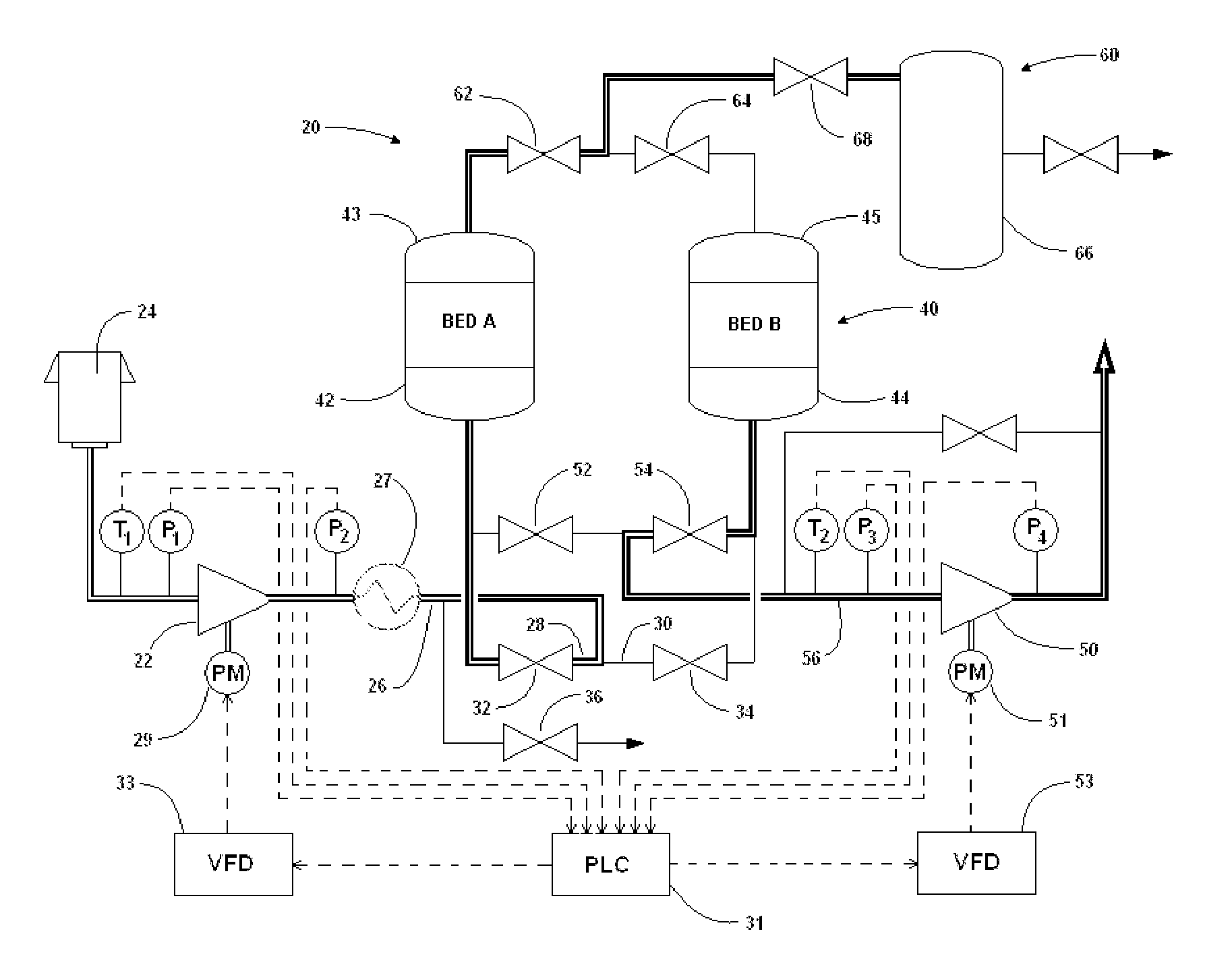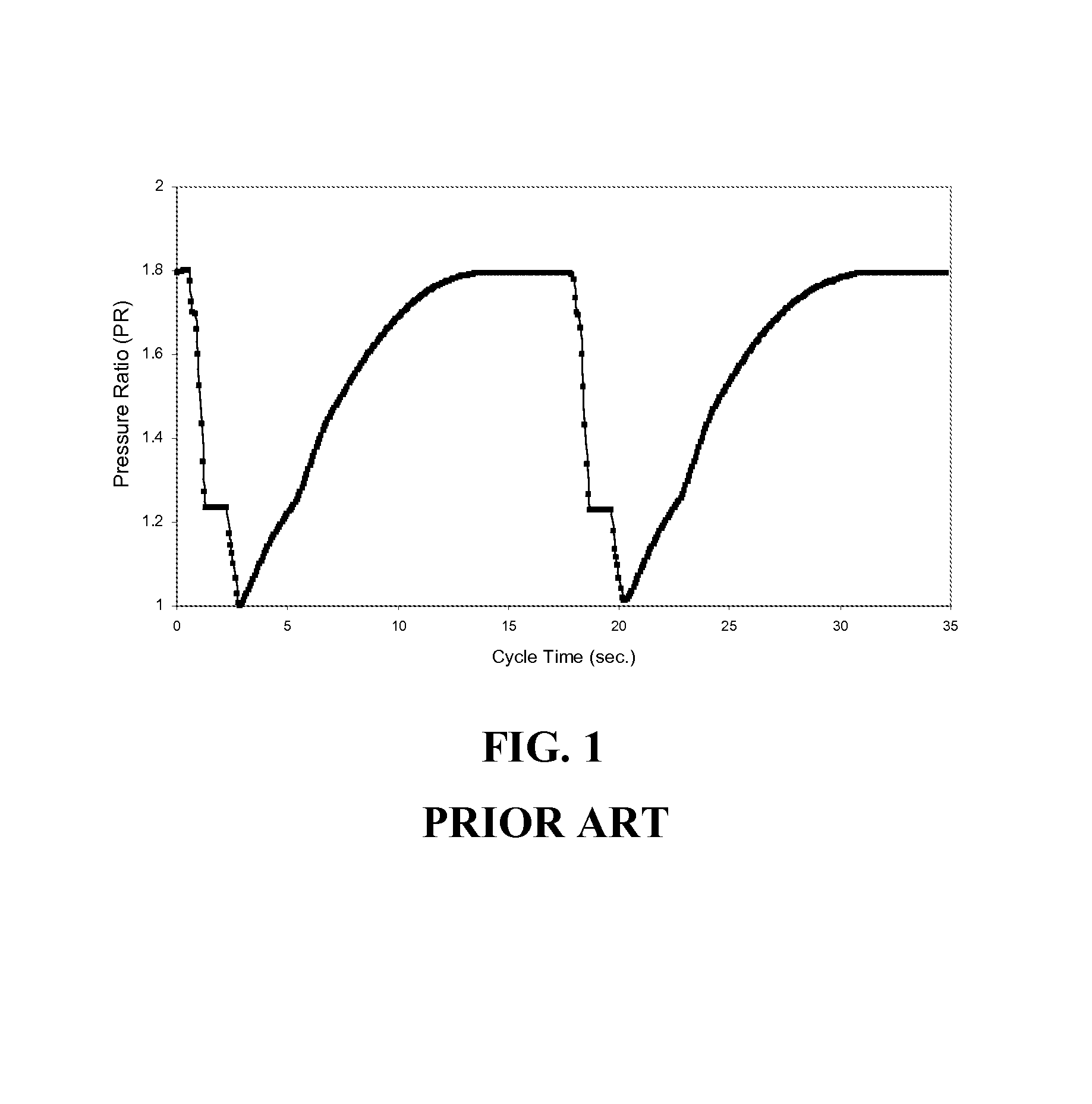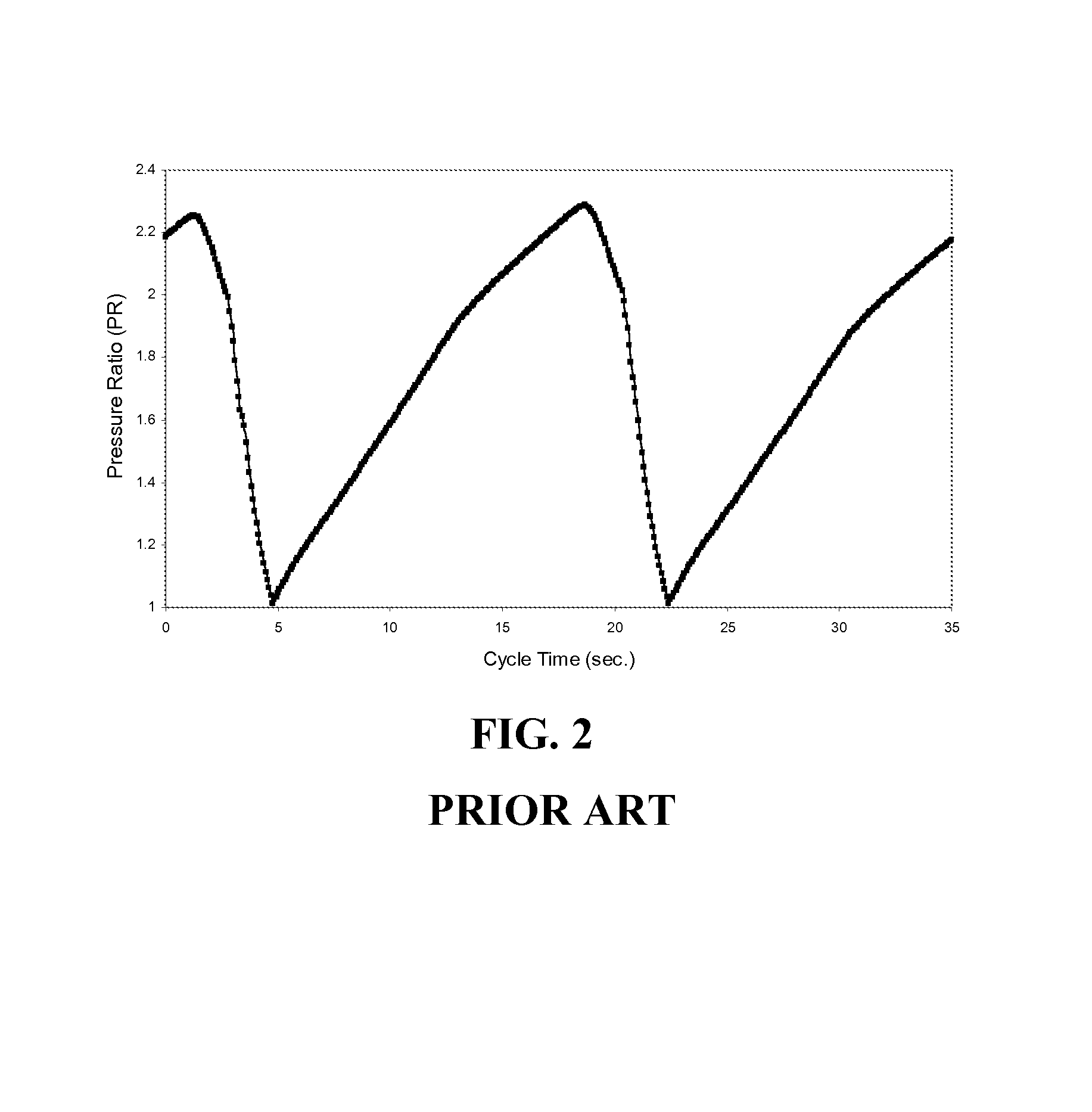Systems and methods for gas separation using high-speed permanent magnet motors with centrifugal compressors
a technology of centrifugal compressor and permanent magnet motor, which is applied in the direction of positive displacement liquid engine, separation process, auxillary pretreatment, etc., can solve the problem that the cycle times of current psa or vpsa systems cannot be achieved with a conventional induction motor system, and achieve the effect of accelerating and slowing down a centrifugal compressor, reducing the friction loss of gear and bearing oil, and being more efficien
- Summary
- Abstract
- Description
- Claims
- Application Information
AI Technical Summary
Benefits of technology
Problems solved by technology
Method used
Image
Examples
example 1
[0054]FIG. 8 is a graphical representation of an exemplary ideal feed compressor response over a typical VPSA cycle. With reference again to FIG. 5 and to FIG. 8 for example, at any instant in time during a VPSA cycle, temperature T1 pressures P1 and P2, temperature T2, and pressures P3 and P4 are measured via a typical pressure transducer or transmitter and recorded in the plant PLC 31. Specifically and for purposes of illustration, looking at the feed compressor 22 during a rising pressure feed step (point A on FIG. 8), the control system calculates the pressure ratio (PR) across the feed machine by dividing P2 over P1. Using this calculated pressure ratio and inlet temperature T1, the control system PLC 31 then determines the motor / compressor operating speed using the compressor performance map and resulting best efficiency line that was generated for T1 as illustrated at point A (in this case, the motor / compressor operating speed is approximately 67% full speed) on FIG. 7. This ...
example 2
[0055]During a constant pressure feed with product make step (see for example point B on FIG. 8), inlet temperature T1 and updated pressure ratio across the feed machine obtained by dividing P2 over P1 serve as inputs to determine the motor / compressor operating speed using the compressor performance map and resulting best efficiency line that was generated for the updated T1 as illustrated at point B (100% full speed) on FIG. 7. This information is then communicated to VFD 33 to direct compressor 22 and motor 29 to operate at such speed. Similar determinations and communications are likewise accomplished with respect to centrifugal vacuum compressor 50 and PM motor 51.
[0056]In general, the pressure ratio across the compressor fluctuates in response to system pressure changes (such as occurs during pressuriziation and evacuation of the adsorbent bed(s)). The speed of the compressor is continuously varied from 100% design speed to a substantially lower speed (e.g., 40% is the typical ...
PUM
| Property | Measurement | Unit |
|---|---|---|
| adsorption | aaaaa | aaaaa |
| speed | aaaaa | aaaaa |
| inlet pressure | aaaaa | aaaaa |
Abstract
Description
Claims
Application Information
 Login to View More
Login to View More - R&D
- Intellectual Property
- Life Sciences
- Materials
- Tech Scout
- Unparalleled Data Quality
- Higher Quality Content
- 60% Fewer Hallucinations
Browse by: Latest US Patents, China's latest patents, Technical Efficacy Thesaurus, Application Domain, Technology Topic, Popular Technical Reports.
© 2025 PatSnap. All rights reserved.Legal|Privacy policy|Modern Slavery Act Transparency Statement|Sitemap|About US| Contact US: help@patsnap.com



